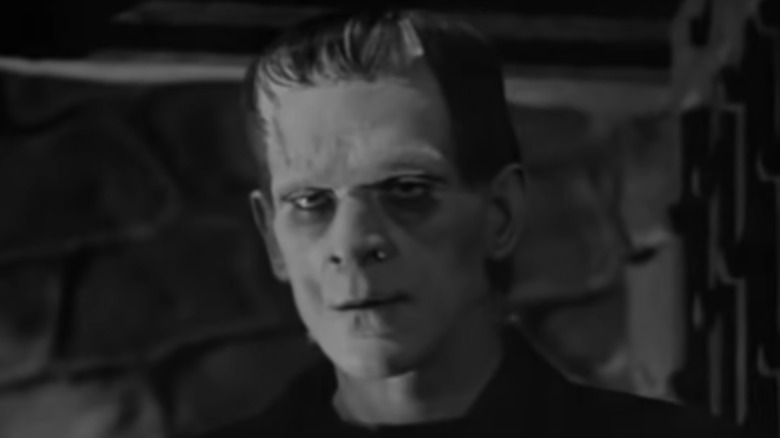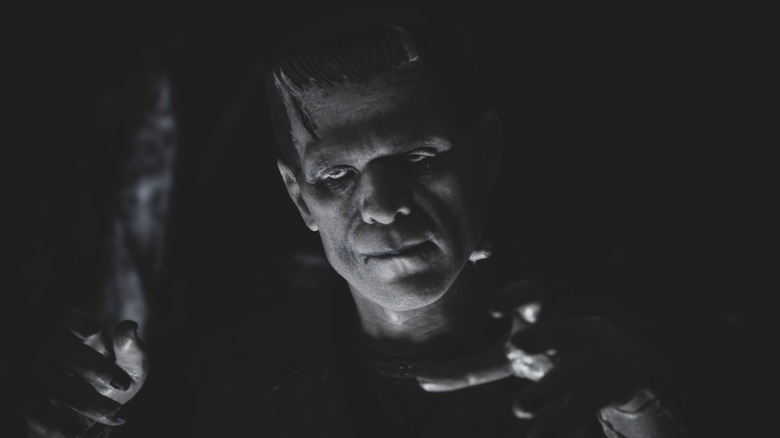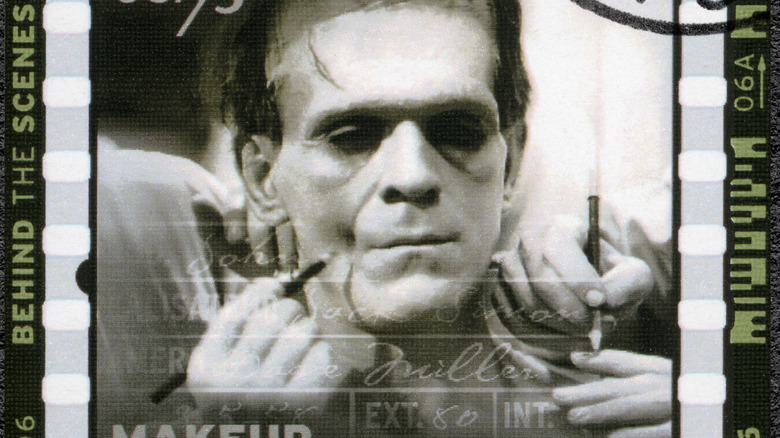The Two Frankenstein Movies You'll Never Get To See
Every good movie monster has an origin story, and Frankenstein is no different. While his actual beginnings come from the pages of Mary Shelley's famous book of the same name, this modern Prometheus became an iconic cinematic figure thanks to Universal Studios' monster movies. Boris Karloff's portrayal as the central character created a generation of horror fans. This is even more impressive when you realize the actor only played The Monster in three films, beginning with 1931's "Frankenstein" (via IMDb).
What fans might not know is the character's appearances on film date back well before Karloff made him a legend. In an irony worthy of the misunderstood monster, two silent films, now lost, can reasonably be credited among the movie monster's first appearances onscreen. Fortunately, the 1910 silent film "Frankenstein" (via YouTube) — the first movie version of the character — is still around. These titles, like many silent films made in the first decades of the 20th century, have not survived, leaving a glaring empty spot in movie history.
Whether through lack of care, the use of silver nitrate stock, or simply experiencing the ravages of time, the Frankenstein monster's unseen cinematic legacy remains a mystery left to those lucky few who viewed the titles during their initial release. Here's what we know about those movies.
1915's Life Without Soul
The 1915 silent film "Life Without Soul" is one of two lost Frankenstein films (via IMDb). Its notoriety no doubt stems from a narrative that deviates from usual takes on the material. In the film, a scientist named Victor reads Mary Shelley's Frankenstein before falling asleep. His dream ushers in the main plot and reaches into concepts such as loneliness and what it means to truly be alive before seeing the leading man destroy what he loves the most. Victor wakes to find that this was merely a cautionary tale of what he could be heading towards with his research (via TCM).
The film appears to have been met with positive reviews around the time of its release. Motion Picture News writer Peter Milne praised "Life Without Soul" for its ambitious approach to the plot. In his 1915 Motion Picture News review (via AFI), Milne alluded to the ending as well as the overall approach to "the gruesomeness of the action." This proved to be the second showing for the critic, having first seen the film a few weeks earlier.
1921's Il mostro di Frankenstein (The Monster of Frankenstein)
While "Life Without Soul" had a fairly normal release for the period, the 1921 silent movie "Il mostro di Frankenstein (The Monster of Frankenstein)" seemed to find problems at every turn. "Il mostro" skips additional storylines and instead chooses to stick with the basics of Mary Shelley's novel. Doctor Frankenstein makes his monster, but a series of events leads to its destruction at his creator's hands.
The 1921 premiere was met with difficulties from the start, including interference and subsequent edits continuously ate at the dramatic structure. Most of that intrusion came in the form of censors determined to remove anything which could be perceived as controversial at the time (via Lost Media Archive). What remained was a cut that didn't live up to director Eugenio Testa's intentions — not to mention audience expectations.
Unlike "Life Without Soul," the Italian attempt at a Frankenstein tale did retain images that can be seen today (via IMDb). They offer a provocative glimpse at what Testa wanted from the project. Those expecting the expert-level makeup found in Universal's monster movies will also be surprised to see the title character as human instead of a monstrosity.


